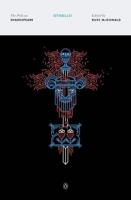Publisher's Synopsis
Where should there be music in an anonymous English religious play of the 15th or 16th century? What sort of music should it be and by what forces should it be performed? What clues are to be found in the pace of music in the wider intellectual and artistic life of the Middle Ages? In answering such questions, Rastall makes an important contribution towards understanding not only how music was used at the time of the play's production, but also how it should be used in a modern production (taking in on the way medieval cosmology, construction of the plays, and boy actors, among many other subjects).;This two-volume study first considers the internal literary evidence of the play texts, the surviving notated music in the plays, the documentary evidence of their production and the cultural context in which the plays were perfomed: this latter section covering the representational and dynamic functions of music in the plays, the relationship between music, drama and liturgy, and the requirements for performers.;The second volume concentrates on the five biblical cycles and nearly 30 other biblical, moral and saint plays which survive, and the records of other plays where texts are no longer extant. From all the evidence, Rastall compiles a music cue-list for each play, bringing together all that is known or can reasonably be inferred about the music to be heard at that point in the play.;The author has also written "The Notation of Western Music", and other works on early musical sources, minstrelsy and dramatic music.










